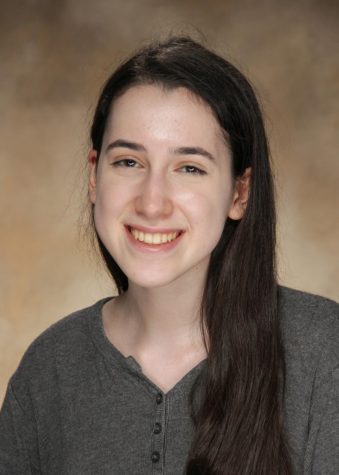Anatomy elective fleshes out body structure and function
October 25, 2017
In one classroom, students will stand at lab tables with dissection tools beside them and a rabbit in front of them.
Anatomy and physiology is a semester-long class offered only to seniors. It has been taught by Head Athletic Trainer Jessica Matula for the past four years and its lessons encompass the skeletal, muscular and cardiovascular systems. Matula said she tends to focus more on the anatomy of bodies than the physiology of them.
Matula said that anatomy and physiology is a required class for most science majors, but it is also usually a large class, on campuses around 100 students, so it is important to expose students to the material and get them “ahead of the curve.” For this reason, the class is taught mainly via lecture, similarly to how college classes are taught.
Other than a lecture-notes style of learning, anatomy and physiology involves labs and worksheets, which Matula has found to help students retain information. The major lab in the course is a dissection that Matula says tends to “make or break why some students take it.”
Matula has adapted the lab over the years. For example, students used to dissect cats, but due to students’ sensitivities to the household pet and a low supply of cats for scientific purposes, the students now dissect a different animal: the rabbit. Matula said that rabbits are “a bit easier for people to kind of understand.” She has also restructured the lab groups.
“I now do groups of three, so that way if your partner is absent no one is ever dissecting by themselves,” Matula said. “I try to give someone who’s really excited about the dissection a [moderately excited] person and a maybe not so excited [person].”
Although all students are required to know the material involved with the dissection and be present during the lab to understand what it involves, none are forced to participate. Depending on how well students do with their first dissection, Matula may add a second dissection of a sheep’s heart into the cardiovascular unit.
“The sheep heart very much reciprocate what the human body has and is much larger to be able to see,” Matula said.
Senior Talia Cohen looks forward to the dissections. Cohen works as an EMT outside of school, which inspired her to take the course. Although Cohen initially thought she would know most of what the class taught and it would be more of a review that would help her work, but found that the class was more detailed than she had expected.
“I think there’s so much of the human body, so many bones, so many muscles, that I was a little surprised to see how much we were going to be learning and how quickly we move through the material,” Cohen said. “Before our last test we went over like 50 bones and had to remember them, so that kind of surprised me and it was interesting to see.”
According to Matula, learning these details is essential not just for future educational purposes, but also for life and health in general. To Matula, the goal is for students to understand the “whys and the hows.” For example, in the muscular system unit, learning about the different muscles and their primary actions has real-world applications.
“It comes together with the cat — they kind of see ‘oh wow, this cat, this is why they can jump so high.’ Now we’re looking at rabbits, ‘this is why they can jump so far,’” Matula said. “Their legs are very muscular compared to their lower body, and I think people are starting to see that correlation.”
Along with seeing their studies come to life in the labs, Matula said students can also use their knowledge in their own lives. Senior Luca Becker finds the class especially relevant to his own life as an athlete. He chose to take anatomy and physiology because of his skating career, so that if he got hurt or something felt off, he would have a sense of the cause. Clear real-world applications is also one of the aspects of the course that Becker finds most interesting and differentiated the course from other science classes offered by CESJDS.
“In other science classes, I feel like the focus was usually on smaller parts like microorganisms, here it’s things that you can see with your human eye,” Becker said.
Although Becker went into the class already interested in anatomy because of its applications, he said he found it interesting how “everything needs to go right in your body for it to be working,” and how “one simple little thing” can throw the body off balance.
“Conservation of life is actually really hard to maintain,” Becker said.
According to Matula, teaching this understanding of why the body works a certain way and why it does certain things, like how tiny parts change affect someone or why people have chest pain, is fundamental.
“You have one heart and your job for the rest of your life,” Matula said. “How long you’re going to live, is how well you can take care of that heart.”








Bob Kronberg • Nov 8, 2019 at 7:46 am
GREAT article! Good for CESJDS for incorporating this class in their curriculum.
And a very profound statement about only having one heart .. and taking care of it!